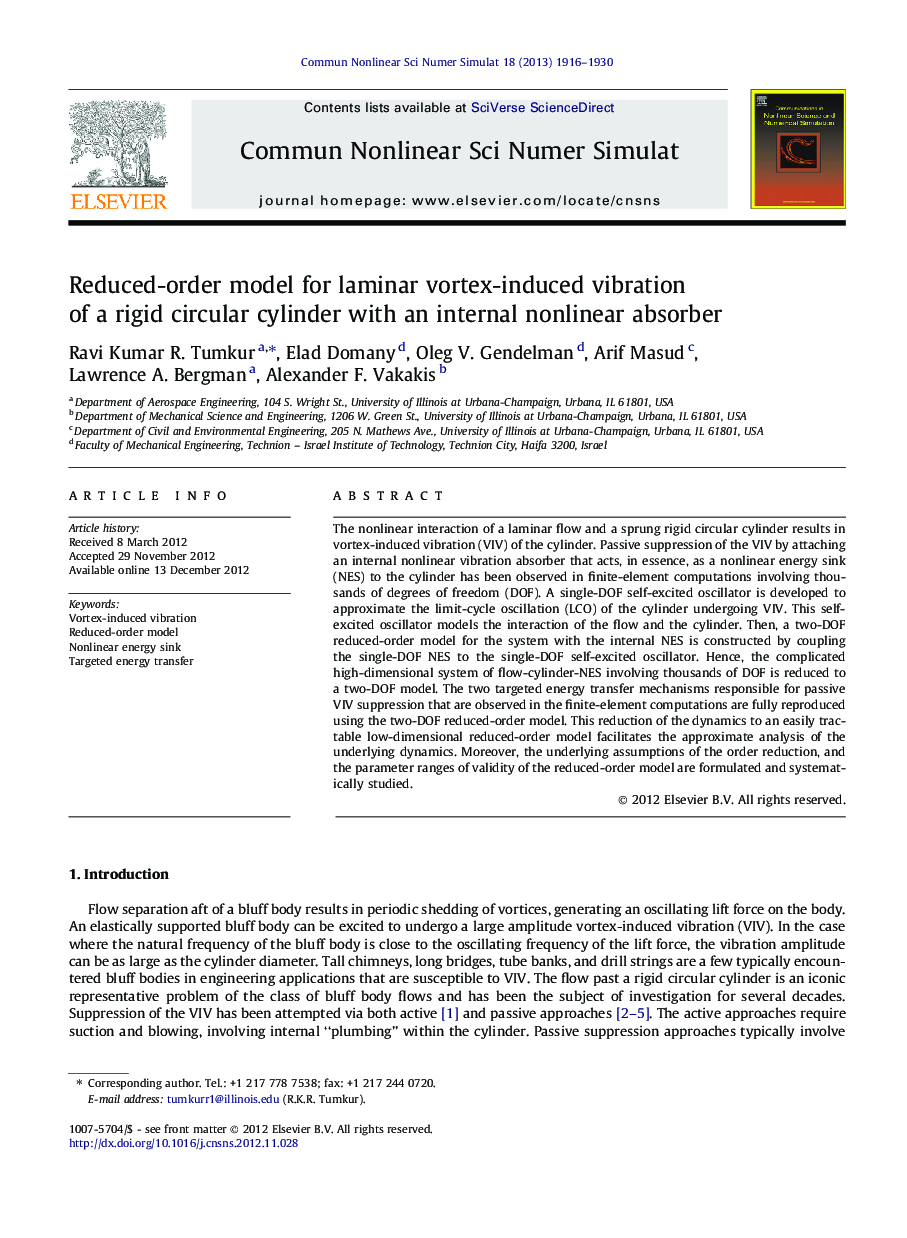| Article ID | Journal | Published Year | Pages | File Type |
|---|---|---|---|---|
| 759166 | Communications in Nonlinear Science and Numerical Simulation | 2013 | 15 Pages |
The nonlinear interaction of a laminar flow and a sprung rigid circular cylinder results in vortex-induced vibration (VIV) of the cylinder. Passive suppression of the VIV by attaching an internal nonlinear vibration absorber that acts, in essence, as a nonlinear energy sink (NES) to the cylinder has been observed in finite-element computations involving thousands of degrees of freedom (DOF). A single-DOF self-excited oscillator is developed to approximate the limit-cycle oscillation (LCO) of the cylinder undergoing VIV. This self-excited oscillator models the interaction of the flow and the cylinder. Then, a two-DOF reduced-order model for the system with the internal NES is constructed by coupling the single-DOF NES to the single-DOF self-excited oscillator. Hence, the complicated high-dimensional system of flow-cylinder-NES involving thousands of DOF is reduced to a two-DOF model. The two targeted energy transfer mechanisms responsible for passive VIV suppression that are observed in the finite-element computations are fully reproduced using the two-DOF reduced-order model. This reduction of the dynamics to an easily tractable low-dimensional reduced-order model facilitates the approximate analysis of the underlying dynamics. Moreover, the underlying assumptions of the order reduction, and the parameter ranges of validity of the reduced-order model are formulated and systematically studied.
► Single-DOF model for vortex-induced vibration of a rigid circular cylinder at Re = 100. ► ROM for suppression of vortex-induced-vibration using an internal nonlinear absorber. ► Reduction of dynamics of the coupled system onto a slow invariant manifold. ► Completely data-driven approach to develop the model and to estimate the parameters.
